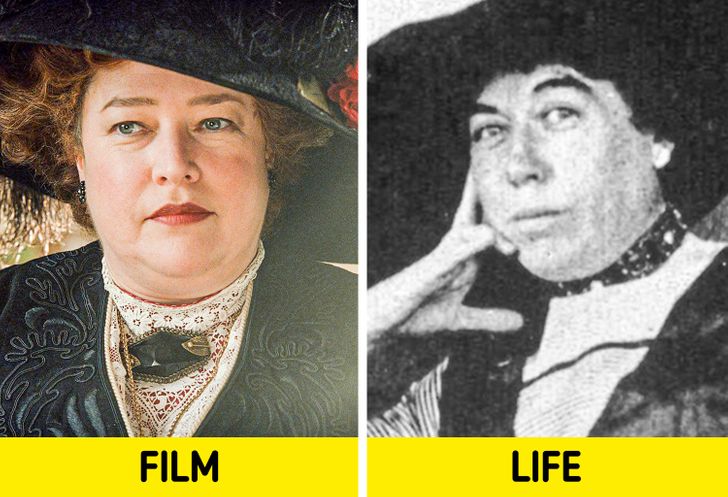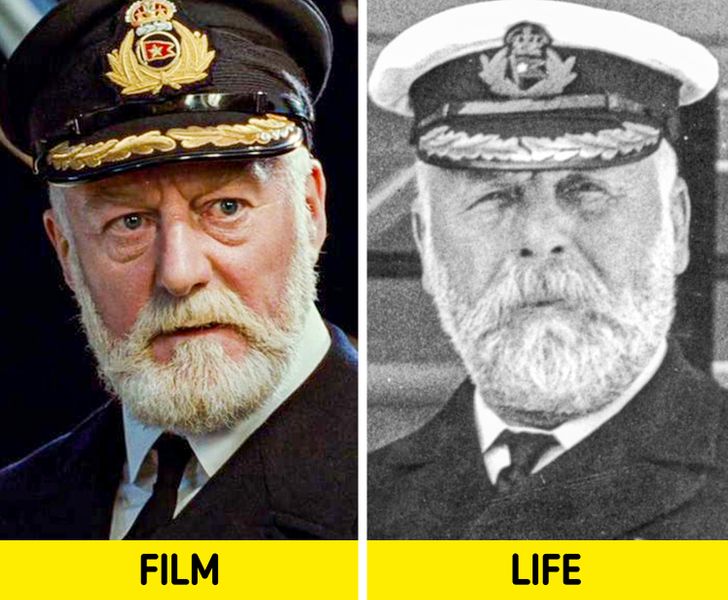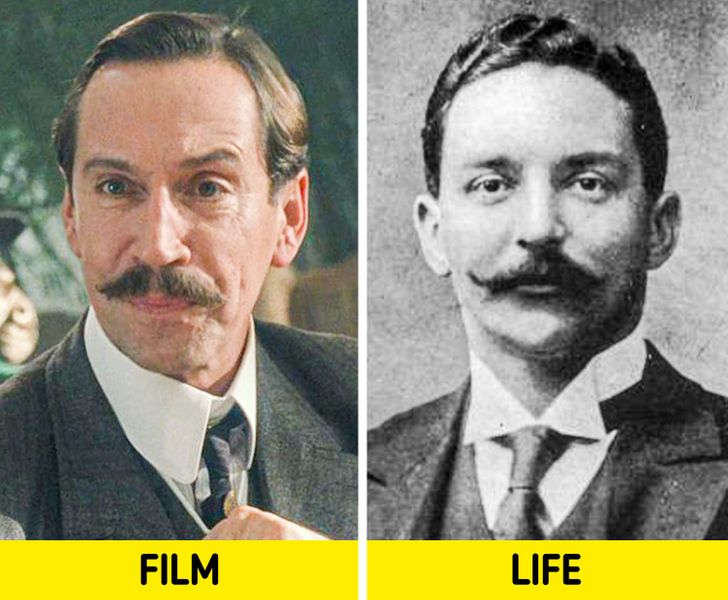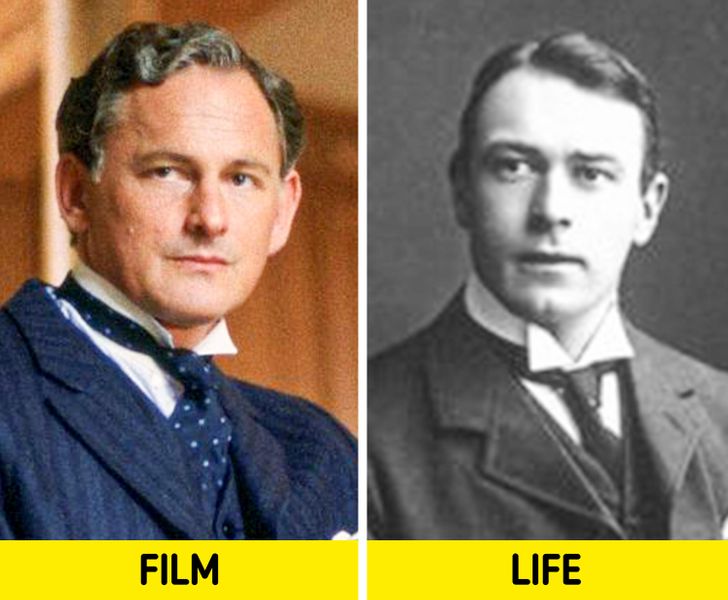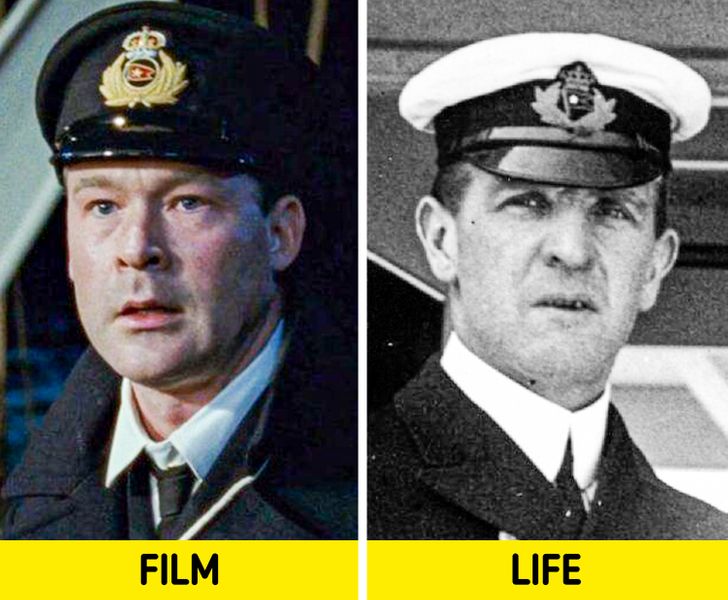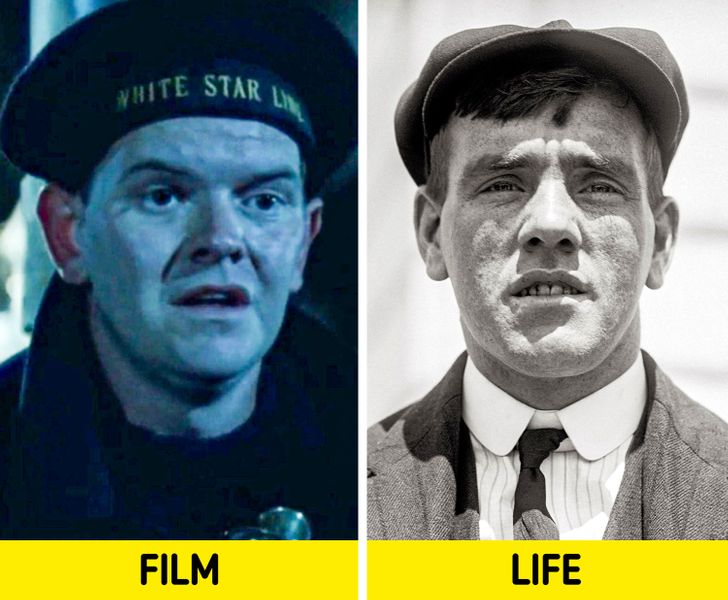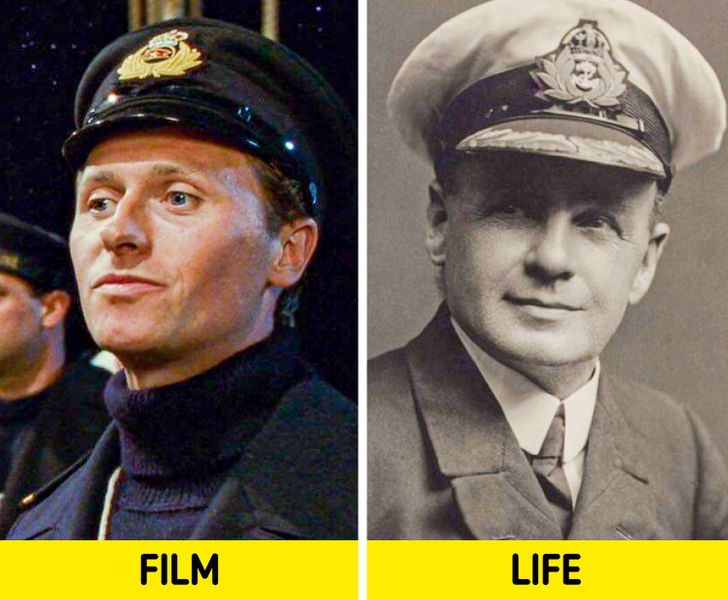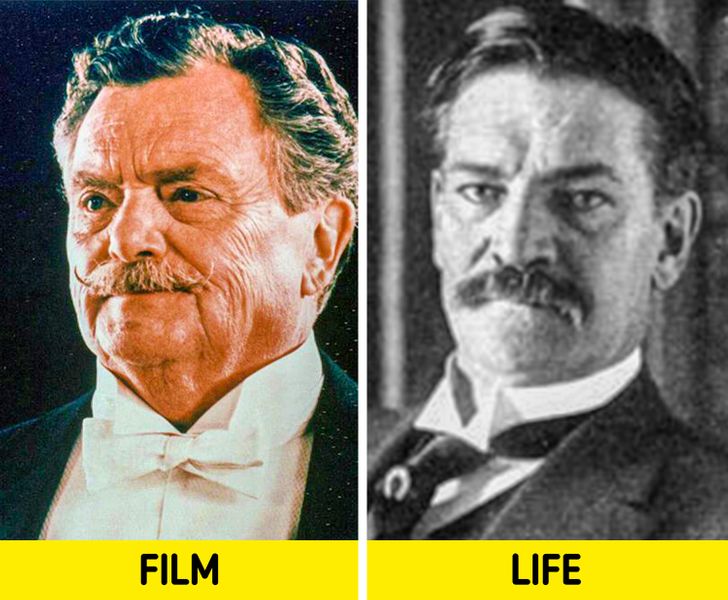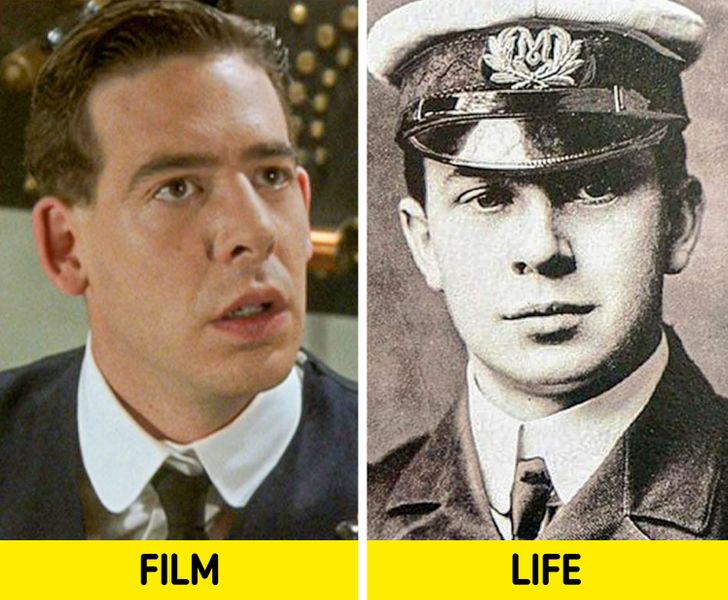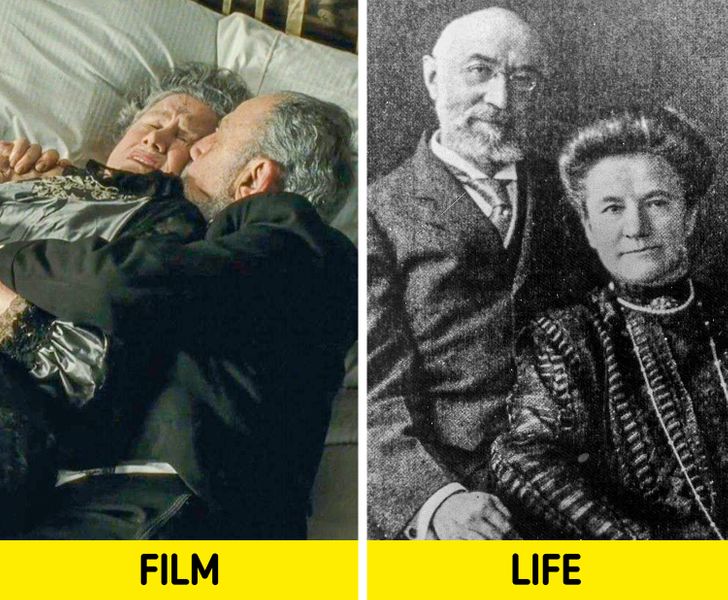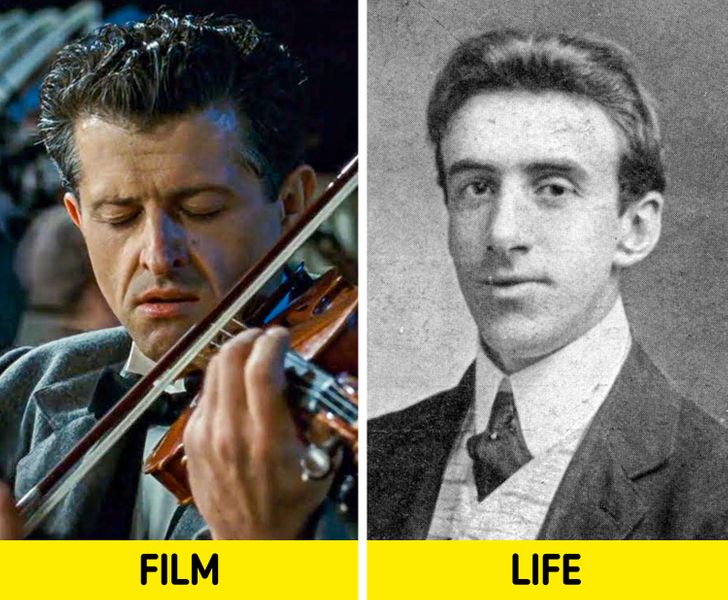I did not watch the movie but have watched a handful of the documentaries. I was a kid when the movie came out and when I considered myself old enough to watch it, I was already into watching documentaries. Nothing against anyone that loves the movie or watched it, I just haven’t. It really is heartbreaking to think of the events though. This was a fascinating tribute. A friend of mine had the replica of a stuffed animal from a passenger when we were little and I understood the gravity of events back then as well. If anyone has not seen the most recent documentaries I recommend them. They monitor the ship and are still trying to fully understand what is left of the ship. That alone is also heartbreaking, the age of the ship and its decay, but is it ours to preserve or should new life thrive underwater as some of the fascinating growths are occurring. It is a difficult question and a question they ask.
What 11 Titanic Passengers Actually Looked Like in Real Life
The sinking of the Titanic was a tragedy and only 700 people out of 2,200 survived. There have been several films about this tragedy, but the most memorable one is James Cameron’s Titanic released in 1997. It has really stunning visual effects, a great romantic story, and, of course, complex and interesting characters.
We at Bright Side decided to find out what the passengers and crew members of Titanic really looked like in real life.
Margaret Brown
Margaret Brown, who lent Jack a suit from her son for a dinner with aristocrats, was a real passenger on the Titanic. A philanthropist, a public figure, and an activist, she always thought about others. Margaret helped passengers to get onto the lifeboats and refused to get on a boat herself. Later, she was arguing with the commander of the boat, asking him to return to the location of the wreck and help the survivors.
When the survivors were saved by the Carpathia, Margaret was making lists of survivors and looking for food and blankets for people. She organized a committee to collect funds and psychological help for the survivors. Margaret was awarded the National Order of the Legion of Honour for her work and was named “The Unsinkable Molly Brown.”
Captain Edward Smith
The Titanic was under the command of 62-year-old Edward Smith who grew up in an ordinary family and dropped out of school at the age of 12 to start his service in the Royal Naval Reserve. Smith was the most experienced captain of the White Star Line company with 40 years of experience. The cruise on the Titanic was supposed to be the last for him before retirement.
At the time, there was a popular opinion that icebergs were not dangerous. And in 1907, the future Titanic captain declared in an interview that he could not “imagine any condition which would cause a ship to founder. Modern shipbuilding has gone beyond that.” There are controversial opinions about the last minutes of the captain’s life. But some witnesses claim that he died like a hero.
Joseph Bruce Ismay
Joseph Bruce Ismay was the chairman and head of the White Star Line company. He wanted to beat his competitors, so he built a ship that was really luxurious which is why he ordered a reduction in the number of lifeboats on the ship from 48 to 16.
After he survived the wreck, Ismay was savaged by both the American and the British press for deserting the ship while women and children were still on board. And even though the official investigation proved that Ismay helped a lot of passengers and took a free seat on the last lifeboat, he had to live his life being known as a coward.
The negative image of Ismay is also carried on in the cinema. James Cameron’s film wasn’t an exception. When the history consultant asked the director to reconsider the character, it was said that the script wouldn’t be changed under any circumstances and the viewers would like to see this character in this light.
Thomas Andrews
Thomas Andrews was the constructor of the Titanic and he went on the first cruise to see how it functioned. After the crash, Andrews was one of the few people that knew the ship would definitely sink.
He convinced the passengers to get into the lifeboats, he searched through the rooms to make people wear life vests and go out on the deck. Andrews didn’t survive. He was last seen a short time before the ship sank. Andrew was throwing chairs from the deck into the water hoping that people would be able to use them as rafts.
William Murdoch
William Murdoch had 16 years of experience in cruises and he was the first assistant to the captain on the Titanic. He was the officer on duty on the day of the crash, but the iceberg was spotted too late and 37 seconds later, the crash happened.
The complicated and controversial character in Cameron’s film made his nephew really angry. The creators of the film went to the motherland of the seaman and apologized to his relative and also donated money to a charity fund of his name.
Frederick Fleet
Frederick Fleet and his colleague were on the lookout on the night of the tragedy and he was the first to spot the iceberg. Later, when he was interrogated by the American and British commissions, Fleet told them that the lookout officers didn’t have binoculars, but if they had, he said, “We could have seen it (the iceberg) a bit sooner.”
But some experts believe that even with binoculars, they still wouldn’t have seen the iceberg in time. Fleet ended up on the same lifeboat with “The Unsinkable Molly Brown” and he survived the tragedy.
Charles Lightoller
Charles Lightoller was the second assistant to the captain on the Titanic. When the ship started to sink, the officer jumped off the ship. He climbed into a lifeboat with 29 other men. Lightoller taught them to keep the boat balanced and to not let it sink. Not everyone could wait long enough for the rescue ship: some just fell into the water because of exhaustion.
Lightoller was the senior officer of all the survivors and, after the tragedy, he made a lot of recommendations for cruise safety. He insisted on increasing the number of lifeboats, he recommended making booklets for training on how to use them, maintaining contact radio connection with every ship, and broadcasting signals about dangerous weather conditions.
Archibald Gracie IV
Archibald Gracie IV was a writer, an amateur historian, and he was a first-class passenger on the Titanic. When the collision happened, he helped Charles Lightoller put women and children into the lifeboats. After the ship sank, he rescued himself on an overturned boat. After he returned to New York, he started writing a book about his experience on the Titanic which became a valuable source of information for historians and researchers.
The health of the colonel was impacted by hypothermia and 8 months later, he died of complications from diabetes. Gracie was so preoccupied with the Titanic’s sinking that his last words were, “We must get them into the boats. We must get them all into the boats.”
John “Jack” Phillips
On the day of the tragedy, Jack Phillips, the wireless officer, had a lot of telegrams from the passengers because the radio was broken the day before. Phillips was so tired that he didn’t even give the captain several warnings about the icebergs from other ships. Phillips didn’t even listen to the full message that could have helped avoid the collision because it wasn’t marked as “important.”
When the collision happened, the captain ordered all the officers to send SOS-signals. And Jack Phillips didn’t stop the broadcast until the room was filled with water and the radio wasn’t functioning anymore. Phillips didn’t survive the tragedy. Harold Bride, who worked with him, remembered that he was amazed by looking at Phillips doing his job when everyone around was in a panic. He said that he would never forget his work in his last minutes.
Ida and Isidor Straus
The scene from the film where an elderly couple is hugging during the sinking of the Titanic is unforgettable. And these characters have prototypes — Ida and Isidor Straus. The spouses really loved each other. And when the businessman and politician Isidor had to be away because of work, they sent each other letters every day.
The officer of the Titanic, considering the age of the couple, was ready to let them both sit in the lifeboat. But Isidor refused because he decided to do what other men on the ship did. He tried to put his wife into the boat, but Ida didn’t want to abandon her husband on the sinking ship. Ida said, “We have lived together for many years. Where you go, I go.” The elderly couple was last seen standing arm in arm on the deck.
Wallace Hartley
The scene in the film where, despite all the panic on the sinking ship, the orchestra kept on playing music moved everyone. This episode is based on true events. Wallace Hartley was the head of the orchestra on the ship and after the crash with the iceberg, Hartley and other musicians wanted to keep the passengers calm, so they started playing music.
Many witnesses claimed that the orchestra continued to play until the ship sank. None of the musicians survived. Hartley’s body was found with his violin attached to it, and there was a note on the back that said, “For Wallace on the occasion of our engagement, from Maria.”
Whose story from our compilation seemed the most moving to you? Share your opinions in the comment section below!
Comments
I have watched this movie several times but each time, I cry like a baby. 😭😭😭 one of the saddest real life movie adaptation I have ever watched
throwing chairs or tables out to the sea so someone may use it not to sink is the most touchable thing for me.
Am I the only one in 2024
the movie is really sad
Related Reads
A Boy Who Was The World’s Heaviest Kid Shows How One Decision Can Change Your Whole Life

20+ Photos Proving That Kids Are an Inexhaustible Source of Entertainment

20+ Designer Outfits That Look a Bit Different on Celebrities Than on Top Models

15+ People Who Won’t Forget How Lady Luck Smiled at Them

I Refused to Be Humiliated Just Because I’m Poor

15 People Who Can Give Masterclasses in Quick-Wittedness

Men and Women Have Very Different Ideas About Ideal Lip Size, According to Studies

12 True Stories That Prove the Internet Is a Carnival of Surprises

My MIL Publicly Shamed Me for Bringing a Dish From My Late Mom’s Recipe to Her Family Reunion

20+ Cool Tips People Got From the Internet, Tried by Themselves, and Scored 10/10

15 True Stories Stranger Than Any Hollywood Script

13 Coworkers Who Took Workplace Drama to New Levels

